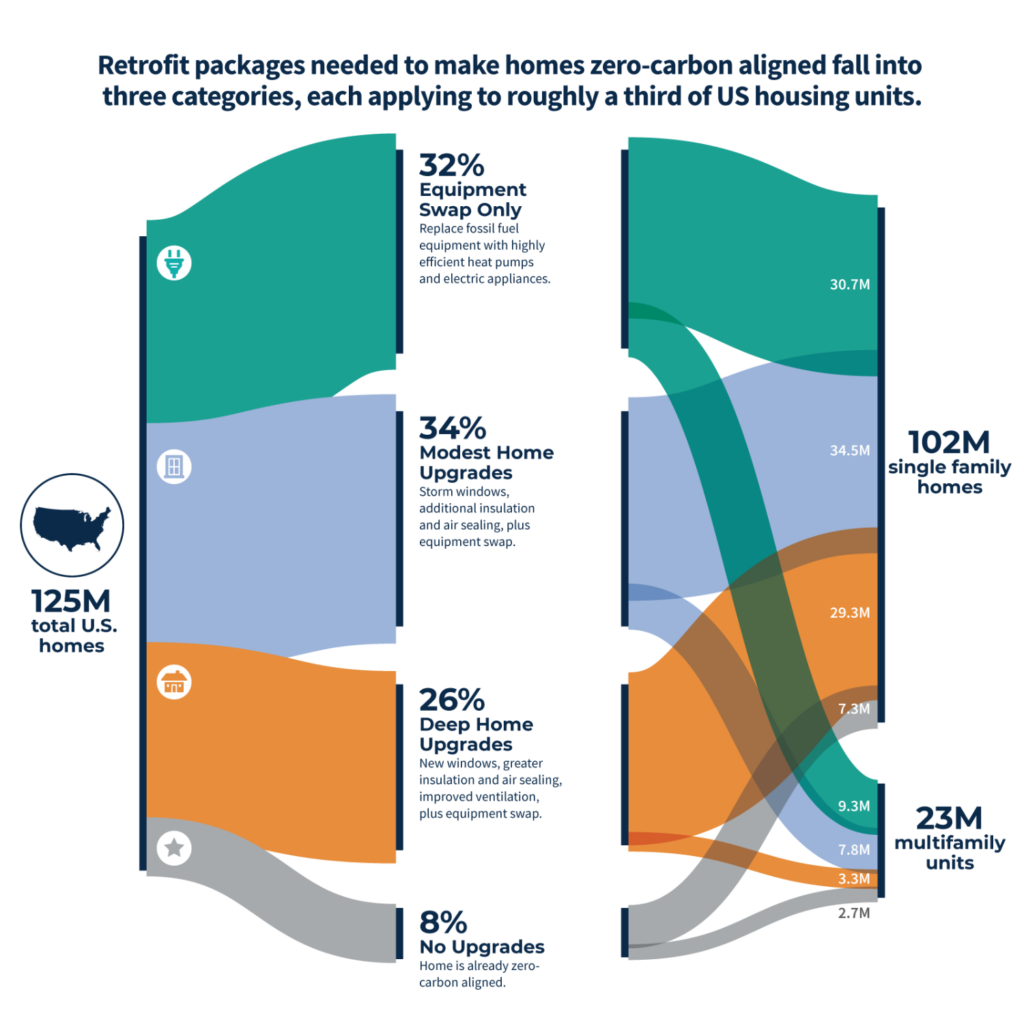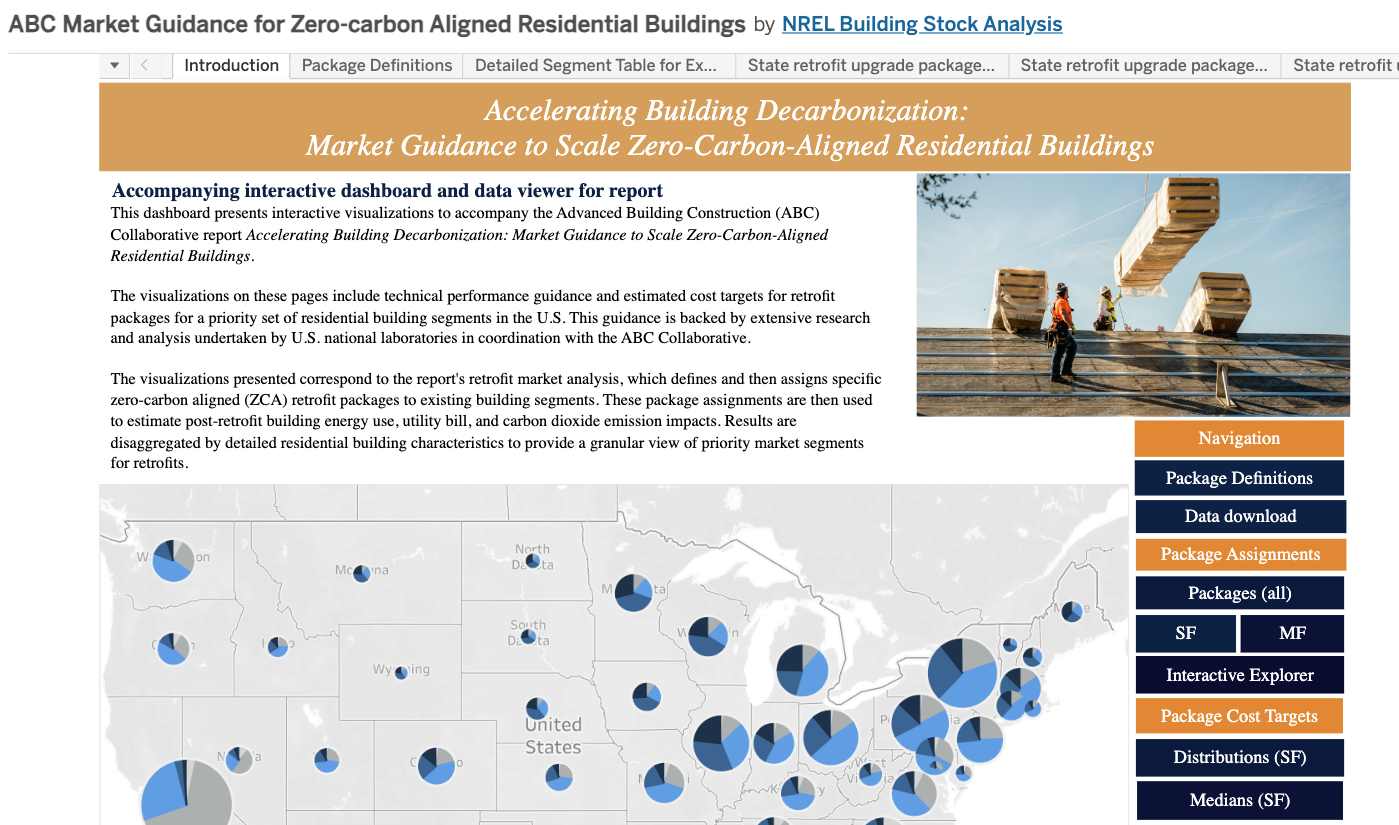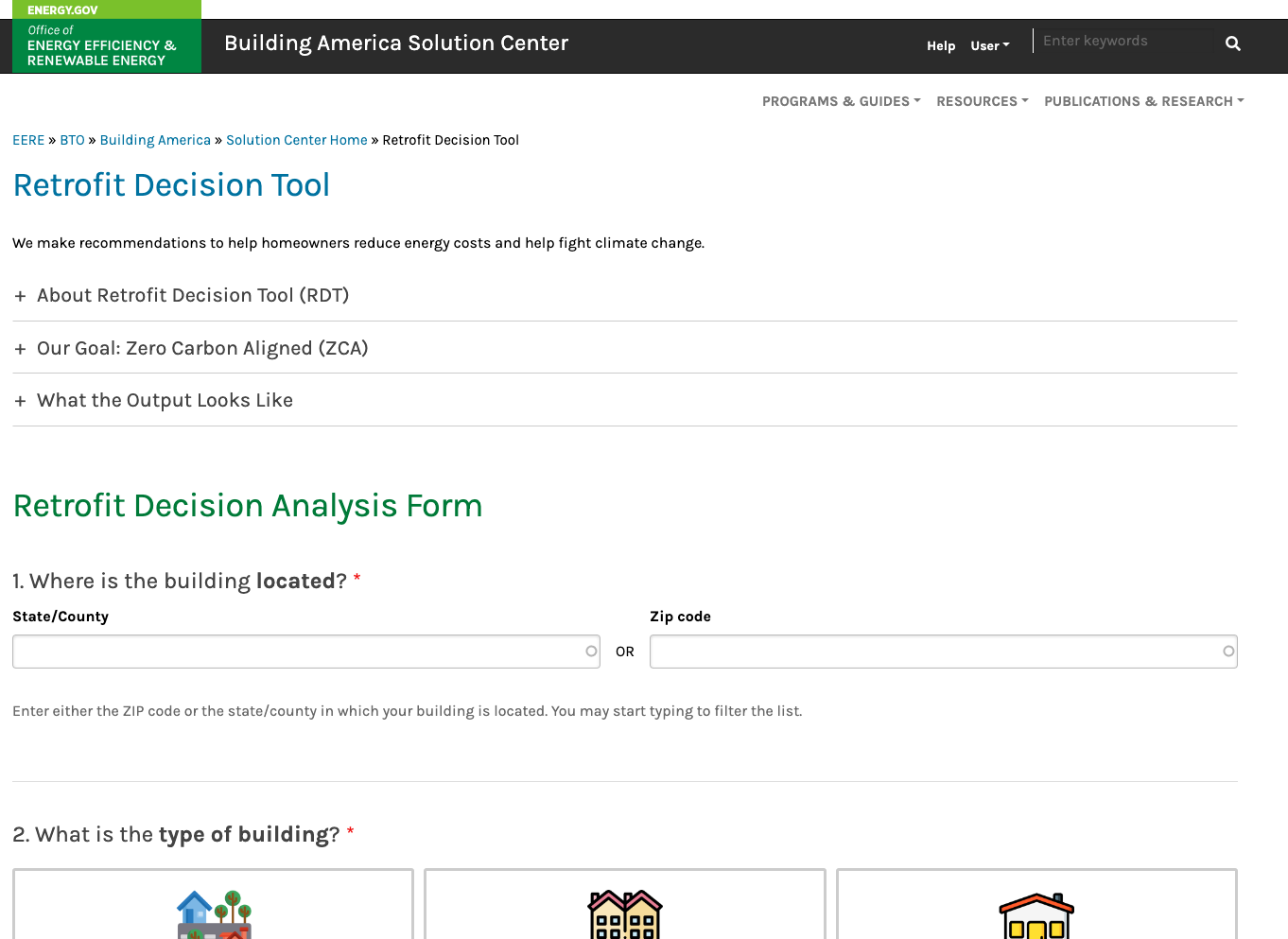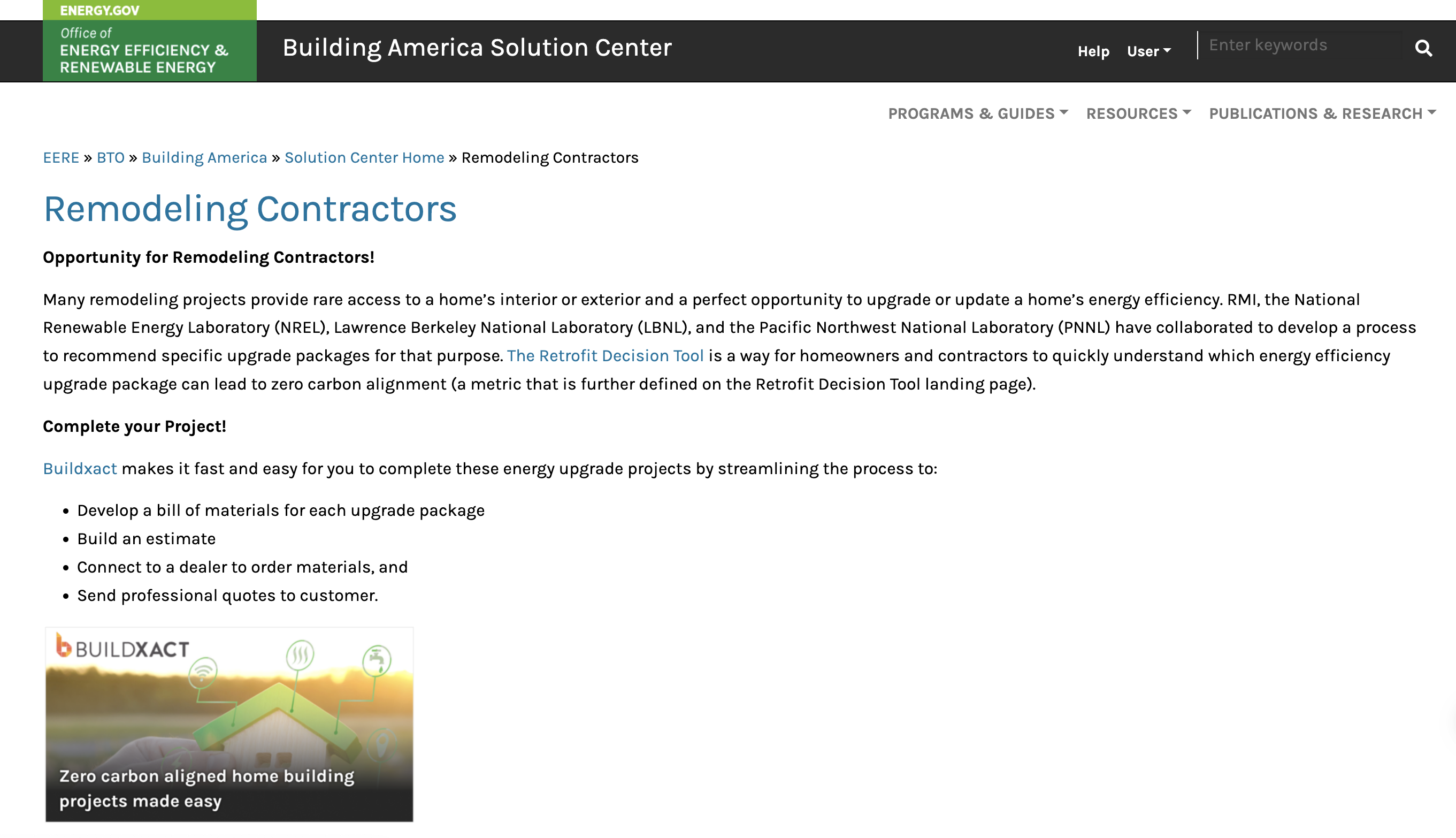Accelerating Residential Building Decarbonization
Market Guidance to Scale Zero-Carbon-Aligned Buildings
Download the report below
With growing concerns about climate change, resilience, and housing affordability, the urgency to decarbonize US residential buildings is more pressing than ever. This challenge also presents an unparalleled opportunity for innovation and market expansion in the construction industry.
Introducing our foundational report, ‘Accelerating Residential Building Decarbonization.’ Targeted towards product manufacturers, fabricators, contractors, installers, design professionals, owners, and real estate developers, this report provides essential technical insights and cost guidance for scalable zero-carbon-aligned (ZCA)* new construction methods and retrofit solutions across various US climate regions.
Key Retrofit Findings:
- About 90% of residential buildings need to be retrofitted in order to become ZCA, with roughly 30% requiring only appliance and mechanical system swap-outs and 60% requiring a whole-building retrofit including envelope upgrades.
- The largest regional markets for different retrofit intervention levels can be identified through findings on upgrade performance targets by climate zone and state.
- Achieving cost targets for the roughly 60% of the housing stock (some 75 million units) that requires upgrades to building envelopes in addition to equipment swaps requires substantial cost compression.
- Advanced building construction (ABC) innovations present a significant market opportunity for cost-effective, timely, and scalable whole-building retrofits.
Key New Construction Findings:
- 28 million new homes are projected to be built between 2023 and 2050, with more than 10 million expected by 2030.
- Voluntary building performance programs and standards support cost-effective ZCA new construction.
- ZCA new construction is already cost competitive in some segments, and industrialized construction approaches can accelerate the pace of cost-effective ZCA new construction.
The report delivers high-quality data and guidance on the path to decarbonizing both new and existing residential buildings that can be used to inform the priorities of various market actors. We spotlight key segments and applications for innovative technologies and approaches, aiming to reduce the costs and accelerate the pace of building decarbonization while enhancing the overall value of the national residential building stock.
This information serves as a springboard for the development and refinement of specific physical solutions, including construction products and assemblies, capable of delivering performance levels that support climate goals. Moreover, it informs business models that can deploy these solutions at scale, leveraging both financial and technical tools. Particularly relevant to stakeholders in the emergent ABC market, this report clarifies industry’s role in and lays a path for a more sustainable and resilient future.
Complementary Tools
This tool helps homeowners identify an appropriate retrofit package for their building typology and climate zone. It was created by the DOE and PNNL.
This tool puts the report’s recommendations into a workflow with Buildxact’s online project management platform.
Homeowners, tell your Contractors about Buildxact, They can connect now to Buildxact to make the job easier for you and for them! In just a few clicks, they can create a purchase order to their supplier, putting you in the perfect position to get your rebate and saving you both time and money.
Download the report
* Zero-carbon aligned definition: No on-site fossil fuel use, low power and thermal loads, obtains all energy from a carbon-neutral grid and/or carbon-neutral local resources currently or before 2050 under a planned scenario, and reduces impact on the grid through peak and general demand reduction and grid interactivity (or, alternatively, through off-grid operation), with the aim of a decarbonized US building stock before 2050.




